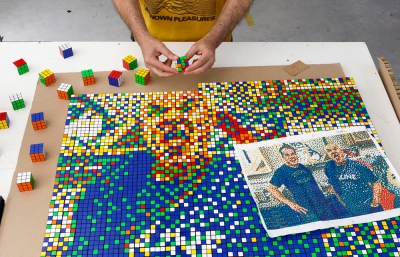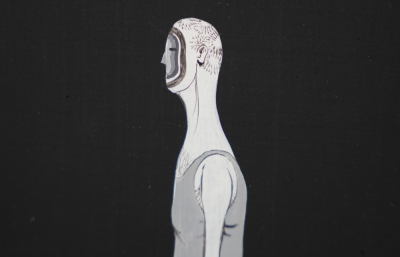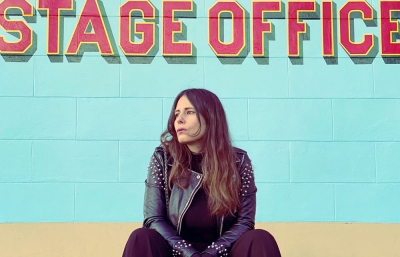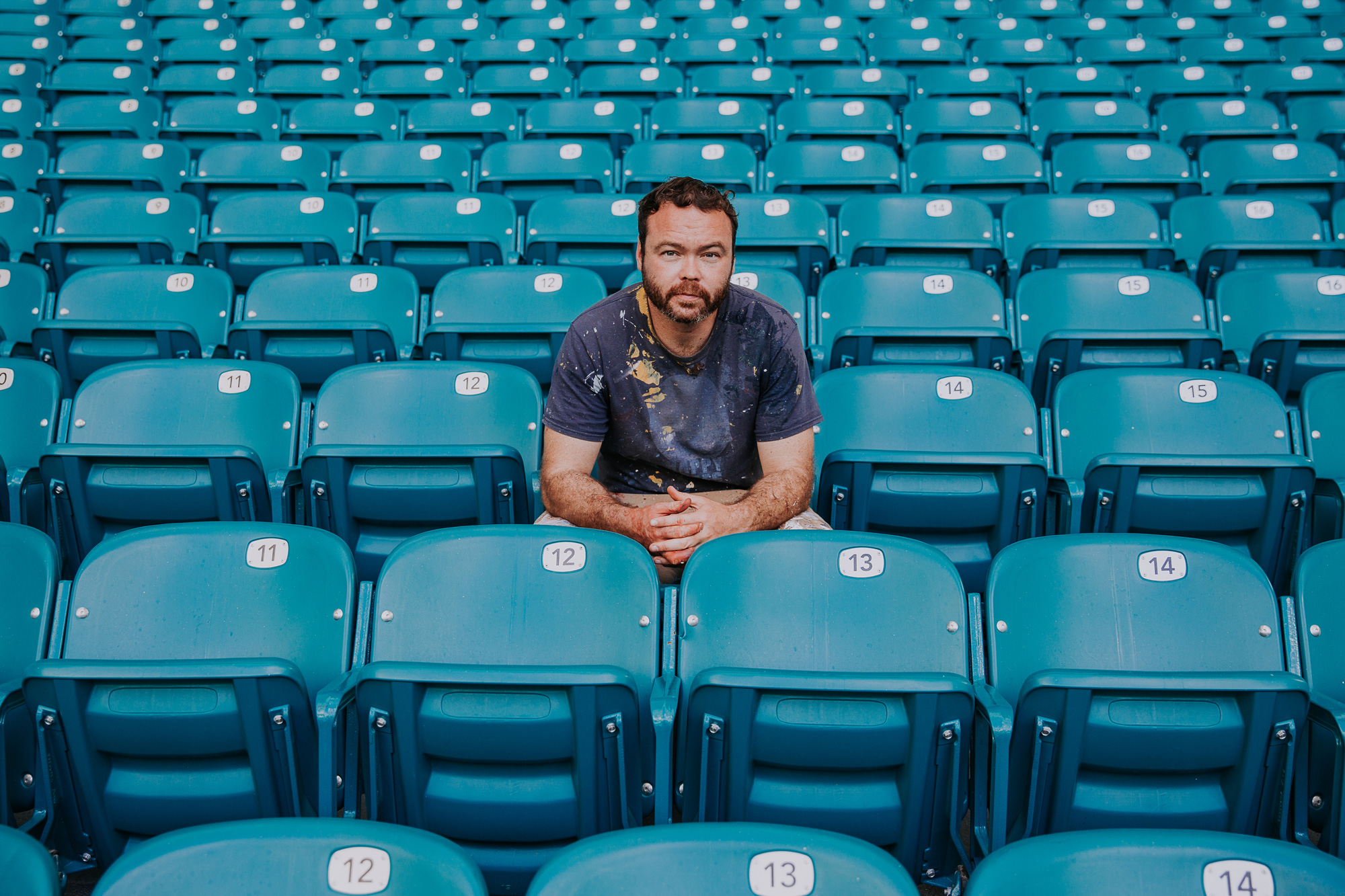
Fintan Magee
The Realist
Interview By Evan Pricco // Portrait By Callie Marshall
Fintan Magee connects to the past and is, perhaps, a futurist, as well. These distinctions are important to understand because, as Fintan puts it, he connects more with the social realist muralists of years past than the street culture of today. From working-class subjects to environmentally-focused commentary, the Australian artist has emerged as a unique figurehead for the socially-conscious twenty-first century muralist community. Between meetings he and I had in Stavanger, Norway, and Miami Beach, Florida, we reconnected in Aberdeen, Scotland for a new edition of the renowned street art festival, Nuart. I caught up with Fintan again on the phone during a hot summer day in Sydney as we discussed Diego Rivera, finding a groove, and being distinctly Australian.
Evan Pricco: Do you think it's hard right now, especially as an artist who is involved in public art and socially conscious muralism, to refrain from injecting politics into the work, even accidentally?
Fintan Magee: Well, I read the news every morning.
Yeah, maybe start by not doing that.
Now it’s just a vortex, like two hours every morning of me just going, "Holy shit." Now I'm thinking about it all day, and yeah, it's distracting, man. But what can you do? If you look for it, there's always something to fucking worry about. But this moment in time just feels a little different.
When was the last time you actually had a couple of months without having to travel, to just hole up in the studio and make paintings? You've been on the mural push pretty hard in the last couple of years.
I've been doing shows as well, but not putting as much energy into that as I'd like. I had a show in Rome in April last year and was in the studio quite a lot, but I was still doing one or two murals a month, so it was like, do a mural for one week, then two weeks in the studio, and back and forth. This is going to be a pretty solid eight weeks without painting a wall, which is pretty cool. From May 2016 to when I saw you in Miami during Basel week, I was pretty much just painting murals all the time. Plus, I was living in Ukraine, and everything's just a little chaotic over there. I don't speak Russian, so everything's a fucking mission.

You were born in Australia, right? How did you end up in Ukraine?
I did a project there in 2015 and I met a girl, and that was basically it; also because I was going to come over to Europe anyway, to work on the Rome show. I had a bunch of murals in Europe, so I needed to base myself somewhere, and Ukraine is just unbelievably cheap. I had an apartment and a massive studio in the middle of the city for $400 a month—a nice apartment and a massive studio. I just couldn't think of anywhere else I could do that in Europe. Maybe Berlin, probably the other option at the time.
Career-wise, it must have been pretty helpful to be in Europe. It’s a good place to do both things, someone who does murals and gallery shows, because there's infrastructure for both. Whereas if you're in Australia, it's really far to get from point A to point B to the rest of the world.
That's the other reason I usually come back to Australia in the summer—when I get back here, it's such a fucking long haul to go anywhere else in the world. That's just something that Australians do. It's really common for Australians to go traveling when they finish high school. You go travel for a year and then go to college. But it's such a fucking mission.
Did you do that?
Yeah, I did a year in Europe when I was 21 or 22, but I was bombing trains at that stage, so it was kind of more like a bombing tour. I really didn't have much money and ended up just working shitty minimum wage jobs in London and Amsterdam. And then, in between that, just painting a lot of graffiti.
Would you say graffiti is your foundation, or is that something that came with just being young?
For me, the foundation was probably my family, really. My father's an artist, a sculptor. My mother went to art school, as well, and they met at art school and are both creative. My mom, after art school, studied architecture. She is a landscape architect, actually, so she designs small gardens and that kind of stuff. I was from a creative family.
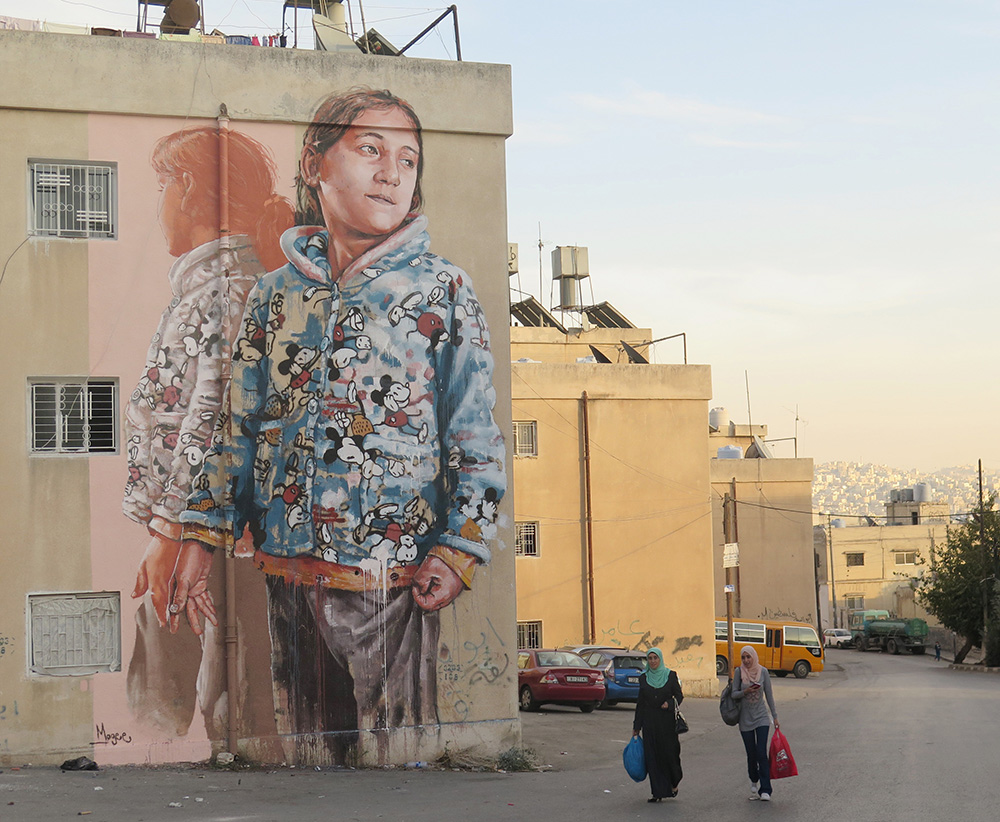
This was where in Australia?
I was born in Lismore, a small town in New South Wales with about 30,000 people. When I was four or five around 1989, my mom moved to Brisbane to study. So I grew up in Brisbane, which is a little bigger. My parents emigrated. My mum was English, my dad was from Northern Ireland—he's Irish. I don't know what brought them to Australia, man, they just kind of did it. They bought a church, actually, for like, 8,000 dollars, an old abandoned church in the countryside. Religion isn't that big in Australia, so there's like all these really small, empty churches in small villages around the country. At that time, you could just buy them really cheap. That was the first four or five years of my life in Australia—in that church.
My parents always encouraged me to draw. Graffiti came, I guess probably when I was 12 or 13, when I first started high school. The neighborhood where I grew up was always a hotspot for graffiti in Brisbane, and I think it still is the area that gets the most. It's kind of like the bohemian neighborhood. Graffiti was just everywhere. As a young kid, it was hard not to be influenced by it, really. I was kind of creative, so I just gravitated towards that and started bombing. There was probably, like, five or six of us kids in my year that were starting out.
You have really great painting chops, both as a muralist and in the studio. Coming from graffiti, the figurative work you do probably had to be honed somewhere else, no?
I was always doing drawings when I was a kid. I don't know why, but I was into drawing military airplanes.
You were a kid, and you were a boy, and this is what boys do, right?
Yeah, true. I was eight or ten years old, and my neighbor had a bunch of magazines all about aircraft. I remember getting a big stack of them and I just copied the planes. I remember my dad telling me that my perspective was done really well for such a young kid. I don't know if they're still around...
When do you think you started hitting your groove? I mean it more in the sense of, when did you start finding the visual voice we see now?
To be honest, not long ago man. Probably 2014, 2015 is when I started doing walls that I think I was pretty happy with.

That's when you started feeling good?
Yeah, at least with this mural thing, man. I was a graffiti writer for a long time. Around 2010, I just started to get really bored with it. I was at art school at the time, actually. And I remember seeing Chloe Early’s paintings in an issue of Juxtapoz and thinking, "I want to paint like that." That was just it. I had been experimenting with stencils and stuff—it was kind of the thing. I was like, "I'm a graffiti writer, I should start practicing street art," because teachers would like that. Then, through Chloe, I obviously discovered Conor Harrington as well. They were the first people that I looked up to; they were street artists but they were more involved in painting, like hands-on painting, which just spoke to me.
There is that really nice movement coming out of the UK scene around like 2007–2010. It was artists like Conor, Ian Francis, and Chloe who were informed by the urban scene that was happening. But they weren't bound by it, they were trying some different stuff.
I think so. It was kind of the beginning of this whole muralism movement, as well, which connected to me a lot more than stencil art or paste-up stuff. I needed to be painting and just liked getting messy, you know what I mean? For me, graffiti is structured and aesthetically built for trains. At the time I was starting with murals, I thought, "Why am I just painting letters on walls? I should be painting on walls." That's when I started experimenting with murals. I hit the reset button a little bit. I think I painted my first mural in 2010, but it was four years before I did anything I was really happy with, to be honest.
What really impressed me when we first met in Norway for Nuart was that you don't just show up to a wall all willy nilly, and bust out something. You care about what you're painting in a particular place, and integrate context and history. For Nuart, you painted the oil workers on the silos, one literally fading away, which was smart because of the oil industry taking a hit in Norway, and the sort of influx moment of the working class in that region of the country. It spoke to the history of the town so well.
It just depends on the time limitations, but you have to make the extra time to take little notes of something that's interesting about a town, or find an event that happened, or read news articles written on a town, and then learn more about it. What happened in Norway was interesting to me because it involved a lot of working class people losing their jobs. And if you look back at the history of muralism, Diego Rivera and Grant Wood, were incredible social realists, who captured these moments so well. I feel like contemporary art pushed back against that social realist movement for a number of different reasons, and it kind of got shut down, particularly once the abstract expressionists came along and art became much more about self-expression than community or social issues.
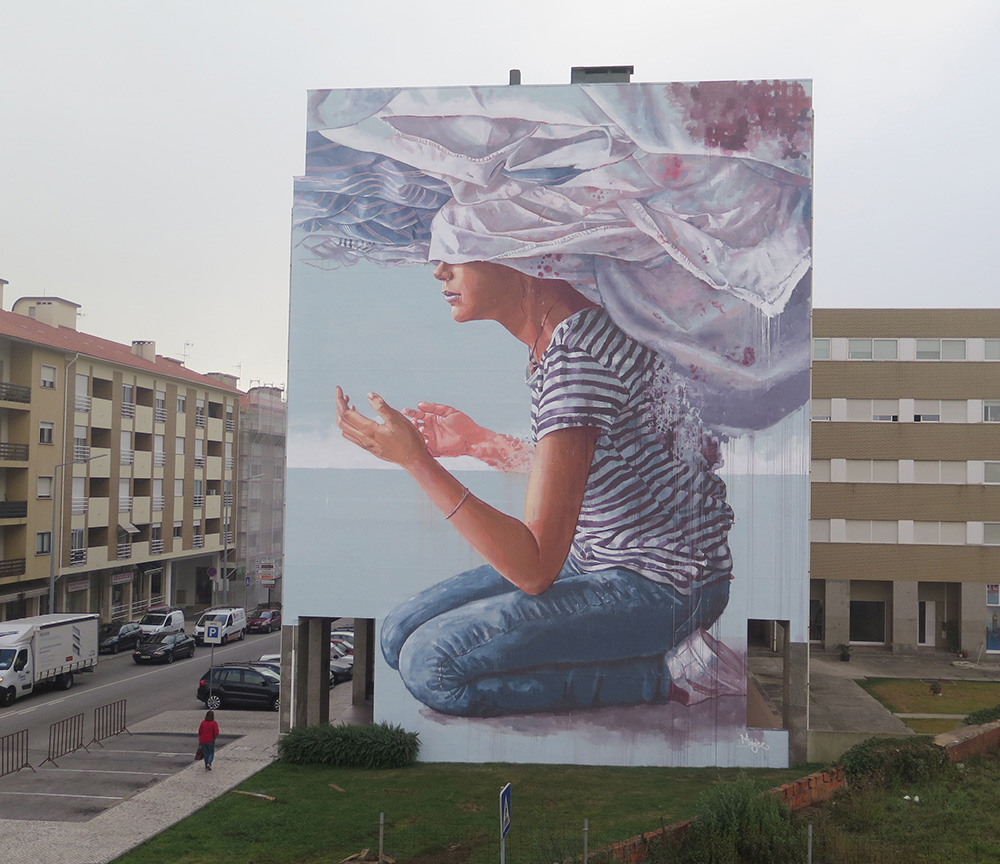
Ego over social commentary. I came from a working class neighborhood. My parents were artists and didn't have a lot of money. Brisbane, or at least the state it’s in, still has this real working class culture. There is a disconnect from high art. Growing up or looking back, I realized that, in particular, the big art institutions and artists themselves weren't really connecting with working people. When I started painting murals, I saw that as an opportunity to just reconnect with people who don't have “capital A” art as part of their daily lives in a way that feels natural. I feel like that disconnect is kind of intentional, particularly in Australia and Britain, and reinforces the class system.
These paintings that you're working on right now, where are those headed?
I've got one work that's going to the Urban Nation Museum in Berlin. I’m supposed to be headed to Aberdeen for the new Nuart Festival there, so I will get out of the studio and head to Scotland. I also have a show with Thinkspace Gallery coming up next year, so some of this work may end up there. It's nice to have a solid foundation of multiple paintings so you can just choose your favorite ones.
What sort of painter do you see yourself as?
I'm a portrait painter, so it's the people I meet who are important. Just this morning, I was taking photos of a woman that I will use for a mural. She's an indigenous Australian, and I just thought I wanted to paint someone connected with the community where the wall will be painted. She was involved in setting up an indigenous health organization, which is kind of like a small hospital, for native people and their health issues. Like Native Americans in America, there's a lot of cultural and medical issues in that community that need special attention. This woman was involved in setting it up in the 1960s, and she's still there, at 76. She's been the CEO for 40 years, so apparently the longest running female CEO in Australia. I was just hanging out with her this morning, and these interactions are what inspire me as a portrait painter. I found out there was a movie called The Sapphires about an indigenous singing group. It was a hit movie in Australia, and she was one of the founding members of the original band! When you are meeting interesting people like that, all it does is inspire and help the work.

How is the Australian art scene right now? Have you noticed it changing at all?
The thing you've got to realize about Australia is that it was very cut-off from the rest of the world in the creative scene for a long time. Even Expressionism didn't really reach Australia until 40 or 50 years after it was a hit other places. Modernism is a similar thing, and we're like, 10 or 20 years behind on that whole movement as well. My vibe is that Australians are just kind of really excited to be able to participate for the first time in our history, you know what I mean? There was a time when you really had to physically move to London or New York if you wanted to get any recognition outside of Australia. It's not so much about being part of something Australian, it's more that we have better access now to participate with the world.
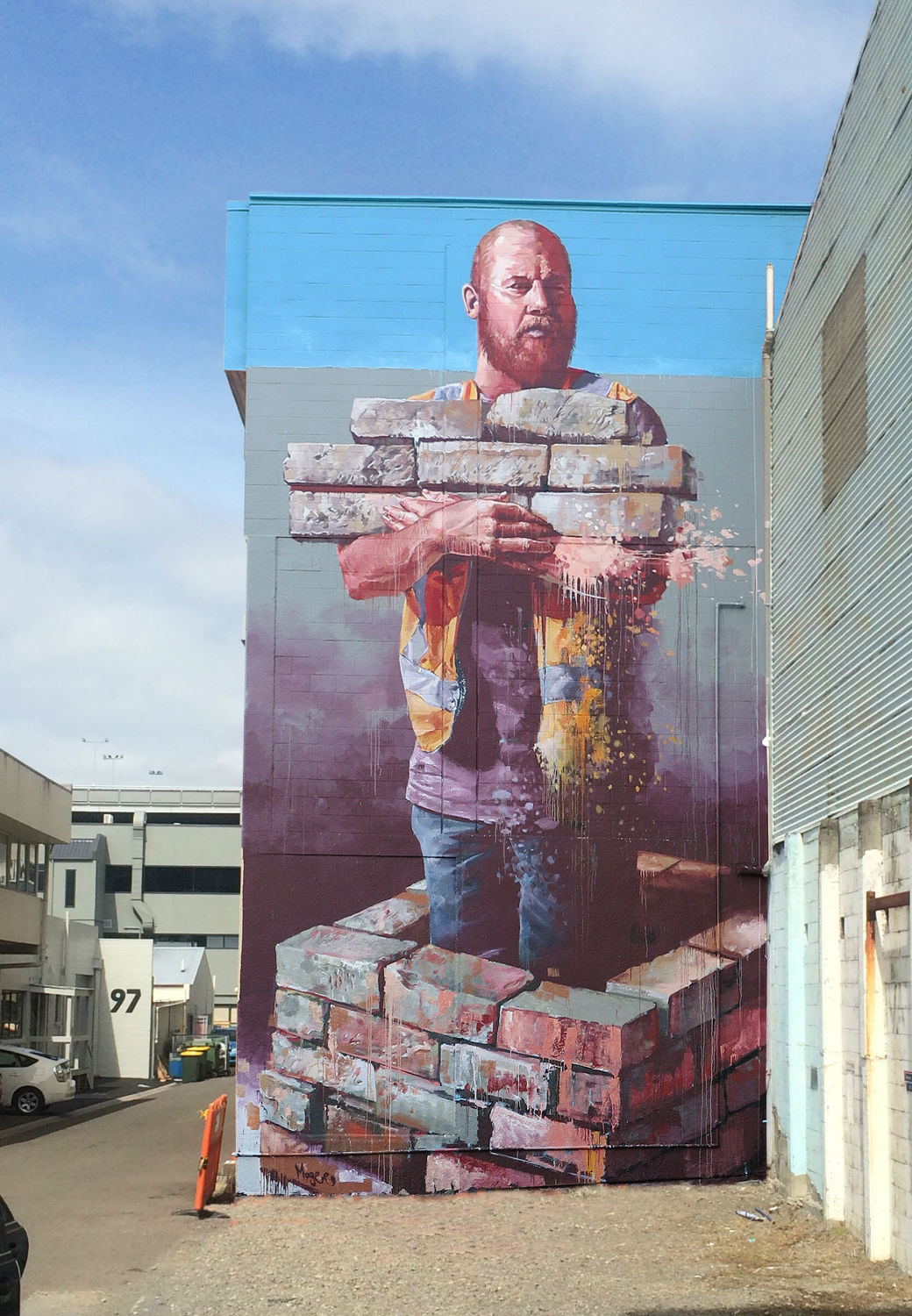
Does that have a downside, Like something uniquely Australian gets lost?
What I really love about the early Modernist Australian art is an example of that downside. Because we were quite isolated, there was kind of a naivety and uniquely Australian flavor to the work. These great artists like Albert Tucker and Brett Whiteley just had a uniqueness to them, and captured the Australian landscape so wonderfully. I think we've lost that a little bit with the internet. Like I said, we're drawing influences from the outside world a lot more, and we're just able to participate on another level. If you go to the mural festivals, there's always a couple of Australians there.
You mentioned earlier, recently finding your voice and a style you are happy with. Has that changed where you think your career is heading?
Yes and no. It does give you a little bit more confidence. It's nice not being hit-and-miss with your work. In the beginning, there's a load of failed experiments, or it just takes time to work out strengths and weaknesses, as well. I feel a bit more in control, but it also makes me want to move onto the next thing. I think most artists I know generally get bored pretty quickly; they're naturally inquisitive people. The thing I want to start doing is more sculpture works. I want to be able to learn the next thing. If you're super comfortable with where you are, it's actually counterproductive, in a way. You have to be a little bit on edge and never completely satisfied with what you're doing; otherwise you're not going to move forward.
Catch Fintan Magee at Nuart Aberdeen in Scotland from April 14–16, 2017.
www.fintanmagee.com



